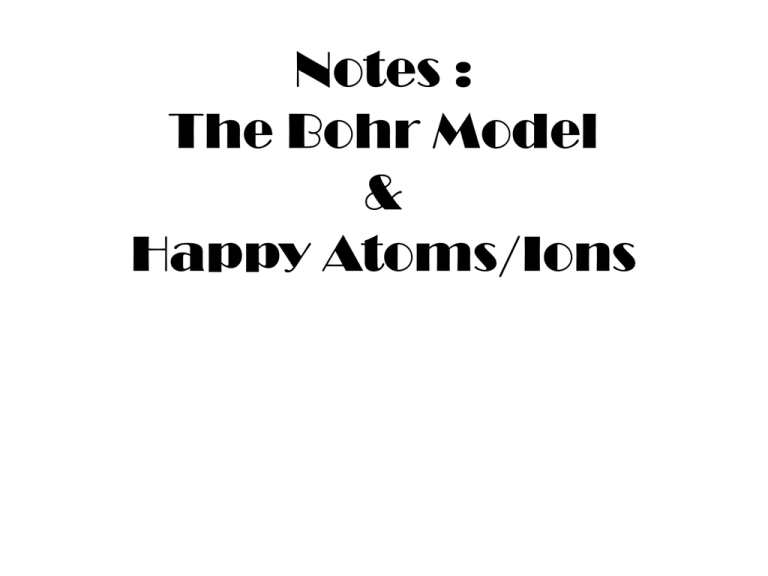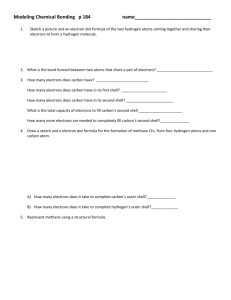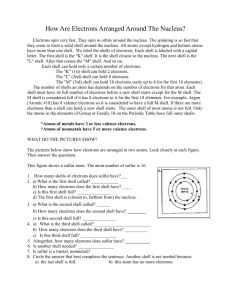Bohr Model, Ions & Lewis Dot Notes
advertisement

Notes : The Bohr Model & Happy Atoms/Ions What atom (element) do you think this is? How can you tell? Bohr Model Diagrams • Atom is always neutral (=numbers of e- and +) • Electrons in an atom are arranged in energy levels (or shells) around the nucleus. • Electrons in the 3rd energy level have more energy than electrons in the first energy level. • Maximum # of electrons in the first energy level (shell) is 2. Max # of electrons in the second energy level (shell) is 8. • The outermost energy level (shell) can never have more than 8 electrons in it (2,8,8,...). These outer electrons are called valence electrons. Steps to drawing a Bohr model • First step: Determine the number of protons, neutrons and electrons in each element. • Second step: Represent the nucleus as a small circle and indicate the number of protons and neutrons. • Third step: Making larger circles, arrange the electrons around the nucleus. = Proton = Neutron What atom (element) do you think this is? Electronegativity Happy Atoms • Atoms are “happy” (most stable) when they have a full shell (2,8,8,…) of electrons. • To become happy, some atoms (usually metals) will give up their outermost electrons (valence electrons) to other atoms. • This leaves them with fewer electrons than protons so that overall they have a 1+, 2+ or even 3+ charge. We call these atoms ions. • Non-metals (right side of periodic table) will take electrons from metals to fill their outer shell. • This means they have more electrons than protons so that they have a 1-, 2-, or 3- charge. These atoms are also ions. The Making of an Ion Na1+ I’m happy now. How about you? Cl1- Yep.










